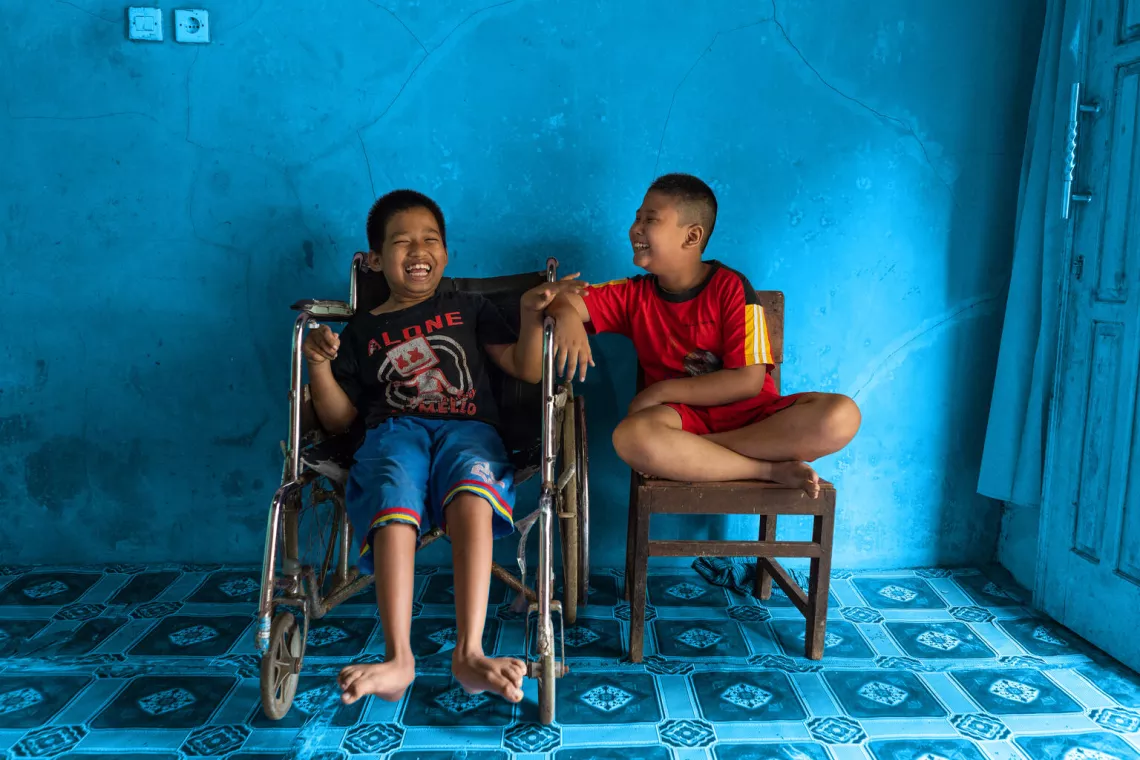For global development programs to be truly effective, they need to reach all children, especially those in the most challenging circumstances. Yet children with disabilities are often left behind and their experiences and needs are overlooked in evaluations. Recognizing this, UNICEF has launched a key resource: Disability-Inclusive Evaluation in UNICEF: Guidelines for Achieving UNDIS Standards. The document highlights UNICEF’s commitment to the rights of children with disabilities and provides a roadmap for making evaluations truly inclusive. In this blog, we expand on these guidelines, providing practical guidance for evaluation professionals seeking to build a more inclusive world for all children.
The essence of inclusion in evaluation
Children with disabilities are too often ignored in assessments. True inclusion means that everyone, regardless of ability, has an equal opportunity to participate fully in society and benefit from development programmes. UNICEF guidelines highlight the diversity of children with disabilities and the range of barriers they face, from physical, social, cultural and legal barriers. Comprehensive assessment is essential to breaking down these barriers.
Preparation: Building a comprehensive foundation
The guidelines highlight the importance of setting the stage for an inclusive evaluation from the start. This includes ensuring that disability inclusion is clearly stated in the Terms of Reference (ToR) and that the evaluation team has demonstrated expertise in this area. Importantly, the guidelines encourage the active involvement of people with disabilities and their representative organizations from the start.
Data collection: Gathering comprehensive insights
The success of a disability-inclusive evaluation depends on how data is collected. Guidelines recommend methods that actively involve people with disabilities throughout the process. Interview methods should be adapted to the needs of children with different disabilities and visual tools may be required to encourage participation.
Analysis and reporting: Thinking about inclusion
The analysis and reporting stage will highlight the impact of a comprehensive evaluation approach. Findings should be presented with particular attention to disability inclusion to ensure that recommendations reflect the experiences of people with disabilities. This stage also provides an opportunity to highlight gaps in the disability-disaggregated data, leading to further advocacy efforts.
Conclusions and Recommendations: Calling for Change
The conclusions and recommendations of the evaluation should reflect a commitment to disability inclusion. This means assessing not just whether the programme worked, but whether it worked for everyone. By highlighting successes and areas for improvement, the evaluation directly contributes to improving the rights and well-being of children with disabilities and shaping more inclusive programmes.
Conclusion
UNICEF’s disability-inclusive evaluation guidelines are a powerful tool on the journey towards a more inclusive world. By embedding inclusivity in its evaluation processes, UNICEF strengthens its programmes and reaffirms its commitment to upholding the rights of every child. For evaluation professionals, these guidelines serve as a roadmap to ensure their work fosters societies in which no child is left behind.

